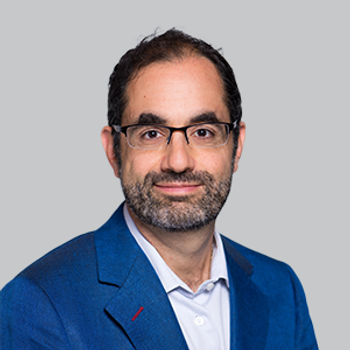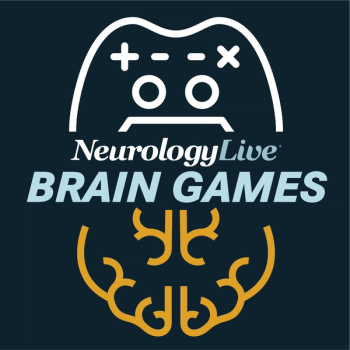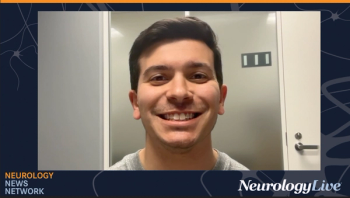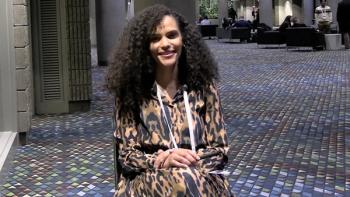
Social Determinants of Health and Clinical Burden in Narcolepsy: A Retrospective Cohort Analysis
In episode 3, Drs. Olson and Shelgikar break down a retrospective study exploring how social determinants of health impact the clinical experience of patients with narcolepsy. [WATCH TIME: 6 minutes]
Episodes in this series

WATCH TIME: 6 minutes
In this special report series from NeurologyLive, leading sleep medicine experts Eric Olson, MD, and Anita Shelgikar, MD—president-elect of the American Academy of Sleep Medicine—offer their perspectives on six late-breaking presentations from the
Throughout the series, the discussion covers a range of pressing topics, from cardiovascular safety and high-dose efficacy of low-sodium oxybate to investigational therapies like TAK-861 and ALKS 2680. The panel also unpacks trends in prescribing behavior and the influence of social determinants of health, offering a comprehensive look at the evolving treatment landscape for central disorders of hypersomnolence.
This next episode centers on a large retrospective analysis from the All of Us Research Program evaluating the real-world social and medical burdens of narcolepsy. In this segment, Olson and Shelgikar explore disparities in employment, access to care, and social well-being, highlighting how these factors intersect with clinical outcomes and comorbidities. The findings underscore the need for holistic patient care that accounts for quality of life, mental health, and socioeconomic barriers.
Transcript edited for clarity.
Eric Olson, MD: The third abstract to review is titled “Social Determinants of Health and Clinical Burden in Narcolepsy,” which was a retrospective analysis using the All of Us Research Program. Individuals with narcolepsy were matched 3-to-1 with non-narcoleptic participants, and both groups were analyzed in terms of clinical burden and social determinants of health.
There were approximately 2800 participants in total—around 700 with narcolepsy and 2000 without. The mean age was 49 years, and interestingly, 70% were female. A few things stood out when comparing the narcolepsy group to controls: 39% of patients with narcolepsy were out of the workforce or not working, compared with 29% of controls. This group also reported more cost-related barriers to care and higher rates of disability.
Looking at social determinants specifically, patients with narcolepsy reported greater food insecurity, higher levels of loneliness, more frequent experiences of medical discrimination, and lower levels of social support and cohesion. Connecting this to our earlier discussion of cardiovascular health, these individuals also reported higher rates of hypertension and heart failure. So overall, patients living with narcolepsy appear to face greater social and clinical challenges, which is an important reminder of the broader burden they carry.
Anita Shelgikar, MD: I fully agree with you, Eric. I’m always glad to see data like this presented—it’s so important to recognize how social determinants intersect with sleep disorders and impact patient care. These factors shape the way individuals live and manage their conditions, and they also influence comorbidities.
There's real opportunity here—not just in how we treat individual patients, but in how we train sleep physicians and care teams to better understand these challenges. The effects on quality of life and the management of other medical conditions are significant.
Eric Olson, MD: That’s a great point. We often focus so much on symptom control that we overlook the fuller picture. I was particularly struck by the findings around loneliness, medical discrimination, and low social support—those are powerful indicators of diminished quality of life. The food insecurity data also stood out. I'm not sure why that was reported at such a high rate—maybe it's an economic consequence of narcolepsy’s impact on employment—but it was unexpected.
Anita Shelgikar, MD: I agree. We have to be careful not to over-interpret the cause-and-effect relationships here, but it’s certainly striking to see the percentage of participants who were out of the workforce and experiencing those challenges. It makes you think about how all these factors interact.
This is a reminder to expand our approach in clinic—to ask broader questions about social context. These aren't details patients will always share unless prompted, yet they’re clearly critical to care.
Eric Olson, MD: One final thought—this really helps explain why patients with narcolepsy often report greater mental health challenges. The overall burden of living with a central disorder of hypersomnolence is just that significant. It would be interesting to see how patients with idiopathic hypersomnia might compare. We don’t have those data yet, but it’s a question worth asking.
REFERENCE
1. Zhou A, Irwin K, Markt SC, et al. Social Determinants of Health and Clinical Burden in Narcolepsy: A Retrospective Cohort Analysis. Presented at: 2025 SLEEP Annual Meeting; June 8-11; Seattle, WA. ABSTRACT LBA 1656
Newsletter
Keep your finger on the pulse of neurology—subscribe to NeurologyLive for expert interviews, new data, and breakthrough treatment updates.
































